 Written by ContentPowered.com
Written by ContentPowered.com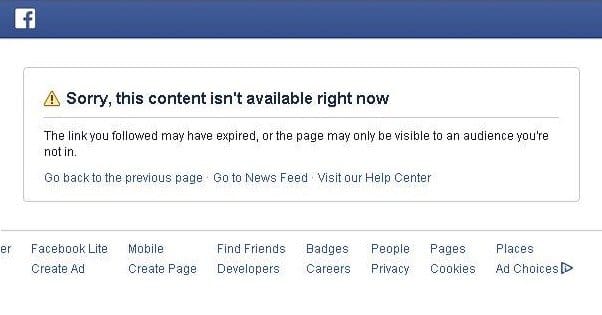
Sometimes, when you want to view a piece of content on Facebook, you get to see it just fine. Sometimes you don’t, and you’re presented with the “this content isn’t available right now” error message. It’s annoying, because it pulls you out of the flow of social networking, without providing any useful information. It’s also infuriatingly non-specific. “The link you followed may have expired, or the page may only be visible to an audience you’re not in.” What does that even mean?
Well, there are a few reasons why this error might be showing up.
1. Actual Facebook CDN Errors
The content unavailable error shows up when, for some reason or another, you tried to reach a piece of content and something stopped that from happening. It’s similar to a 500 server error or a 404 page in many ways, it just has a custom Facebook template over the top of it. The reason it’s so infuriatingly generic is because it covers a bunch of different situations. That’s why Facebook’s help center is such a horrible place to go to get advice about it; there are hundreds of posts and no solutions, because every situation is different and every cause of the error is different.
One possible cause is just that Facebook’s CDN conks out for a second and loses your query. Your browser sends a request, Facebook receives it, something happens, and nothing is returned. Rather than stall out, Facebook submits that error page to you instead. That’s why there’s a “please try again later” component to the error troubleshooting; generally, after waiting a few minutes, everything resolves itself and you can get the content you were requesting.
This seems to be more likely to happen with excessively popular content, content that is requested so many times that any single request can get lost in the crush when a server is temporarily overloaded. It’s less likely to happen on slow days, but it can certainly happen at any time just given a bit of faulty load balancing on a server.
Similarly, though not worth a subheading of its own, is the case where something between you and Facebook errors out. Now, most of the time, if your connection is lost or corrupted between origination and destination, you’re going to get a different kind of display. The page will hang and your browser will go to a “this page can’t be displayed” error generic to the browser. Sometimes half the page will load, but scripts like the infinite scroll won’t.
Sometimes, though, just enough is corrupted – generally in your request, not in the return data – that the error is triggered. In these cases, you can sometimes just refresh and get the actual content. In other cases, it’s an issue with your ISP or some router somewhere between you and the nearest Facebook server.
2. Age Restrictions
That first option is actually one of the least common reasons why this error might be displayed. That’s mostly due to the all of the various ways a connection or a data center can go wrong that have other errors involved. In fact, most of the possible causes of this error have other error messages that can show up sometimes, but don’t show up every time.
One of the most consistent reasons that the content unavailable error shows up is age restrictions on content. Pages can have age limits set, generally due to the type of content on the page, though also occasionally just because the page owner wants a specific adult audience. It’s easy to set, and easy to remove: just go to page settings, click general settings, click the age restrictions option, and set the age group.
There are a handful of reasons why you might want to set age restrictions on your page. The primary one is because of legal restrictions on the type of content you’re advertising on a page. For example, pages about firearms, gambling, and alcohol have specific age restrictions around the world. If you have to be 18 to buy a product, you have to be 18 to view a page about it on Facebook, at least as far as Facebook can enforce. This isn’t 100% enforced, simply because of the size of Facebook as a whole, but if they find a page with users who follow it when it’s not legal for them to do so, they can close down your page.
You might also have age restrictions because you’re posting risqué content or content that requires an adult to view. Playboy has a Facebook page, and you can bet their account is age restricted. Even if they aren’t posting pure pornography – heck, they aren’t including it in their magazine anymore – they still require that people be adults before they view their content.
You can set age restrictions independent of content too, if you wish. Maybe you just don’t want to deal with the immaturity that comes from having people under the age of 21 on your page. That’s fine, it’s a personal choice, and it can help keep your audience more mature, though it’s not infallible. There are plenty of immature adults too.
Facebook requires that any user be over the age of 13 to use the site. This isn’t their choice – in fact, Zuckerberg himself is on record saying he wishes it could be open to anyone. Unfortunately for him, it’s actually national law that online sites require children be over the age of 13, sort of. The actual law requires parental permission to collect personal information about children under the age of 13. Of course, this doesn’t stop kids from lying, though it does have eventual consequences.
The 13 year old age limit doesn’t trigger the error message we’re discussing, though. You simply can’t register an account if you claim to be under the age of 13.
3. Geographic Restrictions
Similar to age restrictions, Facebook allows page owners to set geographic restrictions. However, country restrictions will make your page unavailable to search engines and those who aren’t signed into Facebook. There are also some hard and firm restrictions on some content in some geographic locations. For example, Facebook users in China certainly experience the “content not available” error frequently, simply because of the rampant internet censorship that goes on in that country. China is the biggest example, but there is a lot of censorship going on around the world.
Like age restrictions, a page owner can choose to blacklist entire countries from their pages. This tends to happen for two types of pages. The first type is the large global companies that have different pages for different regions. Sometimes these companies will blacklist countries so that those users have to view the content set aside for their region. A company with both a US and Australian page might blacklist Australians from the US page and vice versa, so they’re railroaded into the page for their country.
Geographic restrictions on the page level are generally only on the country level. You can get more specific with geographic targeting, but that doesn’t explicitly exclude regions unless you’re blacklisting them. You can’t generally tell your page to only be accessible to the city you’re in, though.
4. Account Privacy Settings
Privacy settings can also cause the error to occur, and are typically the cause of not seeing content when the content was posted by a profile rather than a page. Pages have all of these restrictions they can set for targeting on a global scale, but profiles have restrictions on a more interpersonal level. Typically there are three levels of privacy; open to all, open to only friends and friends of friends, or open to just friends. There are also variations, like open to only the poster – to hide a post from everyone but themselves – or to specific groups of friends.
Say Bob posts a long note they share, and they post it to friends of friends. Alice is Bob’s friend, and she can see the post. She shares it, and her friend Steve also sees the post. Steve is a friend of a friend, and can see the post, but since he’s not friends with Bob, he is limited. He shares the post, but none of his friends can see it, unless they are friends with Bob or one of Bob’s direct friends.
The fact is, any time you’re given a link to content you don’t have permission to view, you won’t be able to view it. This happens regardless of the original poster, so long as the privacy settings are set the right way. Normally, Facebook wouldn’t even show you the post; it doesn’t show up in your feed and there are no “friend X liked post Y” stories generated if you can’t see the story. However, if someone links directly to a post you can’t normally view, you can still click the link, you just can’t see the post.
5. Deleted Content
There are two types of deleted content on Facebook; content a user deletes and content Facebook deletes.
The former is not actually gone. Facebook is notorious for not actually deleting the content users want deleted. This experiment has been run time and again, uploading private videos and deleting them, only to find they can still be accessed with a direct hotlink to the file. Sure, that post is old, but how likely is Facebook to have changed their tune?
The other kind of content is content Facebook deletes, and they do it for a handful of reasons. Illegal content, content that violates their terms of service, content that is abusive in some way; all of this is removed at Facebook’s whim, and it’s well and truly deleted. You can’t access it at all. Even when a piece of content is still available via hotlink, linking to the post won’t find it, because the post is gone. This type of content is well and truly gone.
Now, generally, Facebook has a different error for when content is deleted directly, rather than the general content unavailable error. Sometimes this error will show up, sometimes it won’t, Facebook works in mysterious and inconsistent ways sometimes. I personally think it has to do with what server is serving the content at what time; they may have slightly different configurations or versions of Facebook’s software, so it takes time for changes to propagate.
6. Suspended Accounts
When Facebook suspends or bans a user, all of their content disappears from public view. The content is not gone, and thus doesn’t incur the deleted content error. You’re accessing content, not the profile, so the “this profile is suspended” error doesn’t show up. All you get is the basic content unavailable error.
The primary reason for this is because Facebook doesn’t want a ban to mean all content is purged from a page; that would drive away users they just want to warn with a temporary block. They just hide content temporarily as punishment until the problem is resolved and the suspension is lifted. Now, actual bans, that’s a different story; a permanent ban can’t be reversed and Facebook isn’t shy about removing content if they feel fit.
7. Filtered Content
Facebook can remove content without warning for any reason, but there are a couple of reasons they might filter content it in a way that will trigger the content unavailable error rather than another error elsewhere on the site.
One such reason is called the legal restriction, and that’s when Facebook receives a request from a government body to remove a piece of content and decides it’s within their terms to comply. They don’t always do it; Egypt can’t get Facebook to censor content that doesn’t originate in Egypt, for example. It’s all geographic. The example Facebook uses is that Holocaust Denial is illegal in Germany, so content that denies the Holocaust is filtered out for German citizens. It’s still visible elsewhere, much to the detriment of many millions of people, but such is the nature of free speech.
Another reason is when content is filtered. For example, if you ran a Facebook page for a while, and eventually found that Facebook didn’t like your brand, they can filter you. They do this somewhat frequently; they add entire domains to their blacklist. Not only does this mean you can no longer add those links to posts on Facebook, it means that any posts including the now-blacklisted domain is filtered and will cause the content unavailable error.
Problems With Restrictions
Now, obviously, the involuntary filters hurt you because your content is simply gone. What about the intentional filters, like age and geographic restrictions? Those you can willingly add to your page. What drawbacks are there to doing so?
The first drawback is one of a filtered audience. If you, for example, decide to restrict your page by age to 21 or older, that’s great. Fine. Your call. However, any user already following you whose age claims they are under 21 will be removed from your list. They are no longer in your audience. If you decide to remove the restriction, they can follow you again if they want, but they aren’t automatically added back. They have to recognize that they are no longer following you, find you again, and add you back.
The second drawback is more of an SEO drawback; content that is restricted by Facebook for one reason or another is not indexed. Google likes to index Facebook content to take advantage of some social signals, but if the content is hidden to casual browsers or non-registered users, it will not be indexed.
At the end of the day it’s up to you if you want to implement those filters, but I generally recommend only adding some basic country filtering. Age restrictions are best left for businesses where it’s a legal requirement.
What’s New in 2018
Beginning May 2017, and continuing today in 2018, Google is now removing contnet that is “malicious, violent, or unlawful”, which will result in a “Sorry This Content Isn’t Available Right Now” message. This means if you are reading this message, there’s now a chance it was simply removed because it violated Facebook’s terms.
Of course, all of the other possibilities mentioned above are still a possibility, and Facebook doesn’t publish exactly why content isn’t available; they just tell you that it no longer exists, and it’s up to us to decide why that happened.

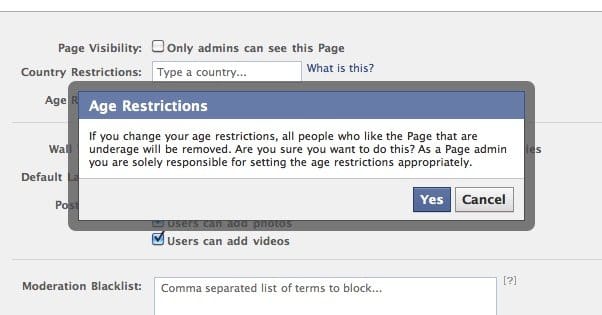
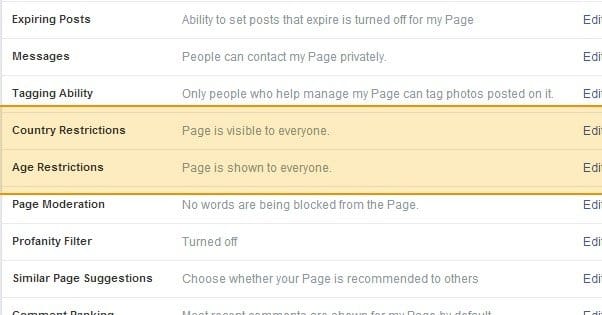
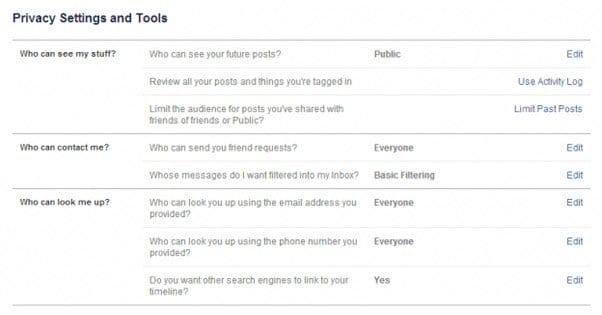
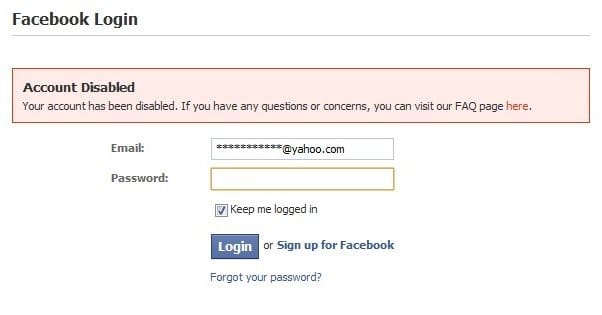
Thank you! This was so helpful. It was the age restriction that brought up this message for me.
Sometimes you get…banned by a website. For example. Let’s say you are commenting on a newspaper’s website. Amd one day you write a comment but when you hit Post button, you get the message “Sorry, this content is not currently available”. There is nothing wrong with FB, it’s just that the newspaper’s website simply banned you from commenting there.
Mostly useless information, as is usual with Facebook & co. If I am blocked, Facebook is dishonest and does not notify me of this.
What if you get a notification from someone and it says sorry this content isn’t available right now. It may not be visible because you may not be in the audience”. I told my husband happy birthday. He got the notification. He liekd it and replied back, love you to. I liked his reply. He got a notification from me saying i liked his comment. When he clicks on it, it now says that instead of letting him view it.
I know of someone who shared a libelous tweet about someone on their Facebook group page. It was reported to Twitter and Facebook and the content has been removed however this page shows up in the Google search results and Google still shows the original content as the search header and they won’t remove it because the link is still ‘active’
If appears that an Administrator can stop the entire thread (or perhaps that specific person) if comments lead to tangents that spread out from the original post/piece of subject. For example, if a question is posted on a page about a school and then people proceed to talk about the school system which deviates from the original question, the Administrator doesn’t approve of the comments because they do not leave favorable comments about the school system. Even when a person replies in a professional manner, the comments are most likely not what the Administrator wants so freedom of speech is interfered with. This is never done unless controversy starts or if someone comments on specifics from those tangents. I’m suspecting the Administrator does not approve of the content as they may view it as unpleasant (instead of happy comments, so to speak) and they are controlling what comments they want and don’t want. Just because they are the Administrators doesn’t mean they are always fair people and some of them have an entire list of rules for “their” group and are very demanding and possessive of “their” page/group.
Some posts appear on my timeline that I like e.g. cute cats, etc., I share them & then see a message that this is not available. There is nothing objectionable about them, so why would they be deleted.
links that come from friends or newspaper don’t open on my face book page. It says, ” the content is not available. Any solution please.
Facebook is one big censoring machine. Any post in support of Palestine is deletet but even violent post about Israel is NOT! 1/4 of my posts on FB is deleted by FB. A few of them relates to the Palestine/Israel conflict, but some of them are just links to ordinary articles on the net about pretty normal and harmless issues. The latest post FB deleted was a link to a total innocent love song on Spotify! Go figure that one out… The FB delete machine is automated (a bot) and it is not without bugs.
How about the most obvious: Someone unfriended you and you can’t get access to a feed that you formerly could. I just had that happen due to being unfriended by an intolerant former friend of over 20 years.